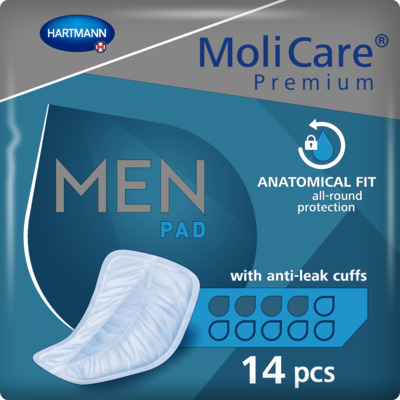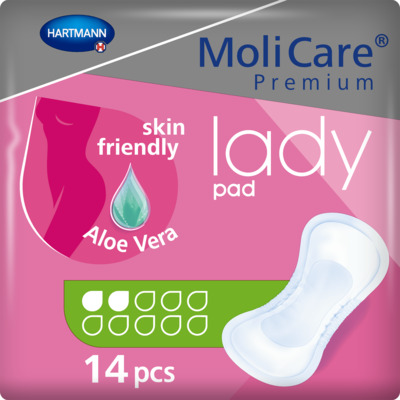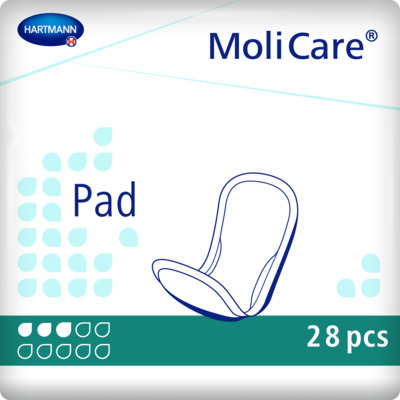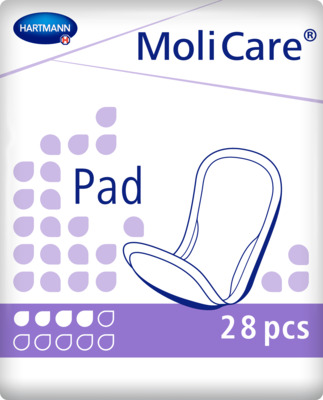Incontinence Advice
Incontinence After Prostate Surgery
Urinary incontinence after prostate surgery is a common concern for many men that undergo treatment for prostate cancer. While the journey to recovery can seem daunting, the good news is that there are effective strategies and treatments available to manage and often significantly improve this condition. In this article, you will learn everything that you need to know about urinary incontinence post-prostate surgery, as we offer insights into its causes, treatment options, and supportive measures available within the UK.

Understanding Urinary Incontinence After Prostate Surgery
Urinary incontinence, the involuntary leakage of urine, is a potential consequence of prostate surgery, often causing concern and discomfort for those affected. Two primary types of incontinence may occur post-surgery: stress incontinence and urge incontinence.
- Stress incontinence, characterised by leakage during activities that put pressure on the bladder, such as coughing or lifting, is particularly common after procedures like prostatectomy.
Urge incontinence, or an overactive bladder, results in a sudden and intense need to urinate.
In this article
- Understanding Urinary Incontinence After Prostate Surgery
- How Prevalent Is Incontinence After Prostate Surgery?
- Causes of Incontinence After Prostate Surgery
- How Surgery Can Affect Prostate Surgery
- Causes of overflow incontinence in men
- How To Manage Incontinence After Prostate Surgery
- Treatment Options for Incontinence After Prostate Surgery
- Non Surgical Options For Incontinence After Prostate Surgery
- FAQs
How Prevalent Is Incontinence After Prostate Surgery?
On average, between 6-8% of those that undergo prostate removal will experience some form of urinary incontinence; the good news is that this is often temporary. Factors influencing the onset and duration of incontinence include the surgical method employed, the patient's age, and their overall health status.
Learn more about the factors that can contribute to prostate problems.
Products for men
Take a look at our incontinence products for men
Causes of Incontinence After Prostate Surgery
The prostate gland, located just below the bladder, plays a role in urine control. During prostate surgery, the internal sphincter, one of the valves controlling urine flow, may be removed or damaged, impacting bladder control. The extent of incontinence can also depend on the pre-surgery condition of the pelvic floor muscles and the presence of other health conditions.
It's also worthwhile in understanding bladder problems in men that, if left untreated, can lead to incontinence.
How Surgery Can Affect Prostate Incontinence
The removal of the prostate gland, alteration through treatments like radical prostatectomy, radiotherapy, or High-Intensity Focused Ultrasound (HIFU) can lead to what is known as prostate incontinence. These treatments, while effective in combating prostate cancer, may affect the nerves and muscles involved in bladder control, leading to conditions such as stress incontinence, where activities that increase abdominal pressure cause unintended urine leakage.
Radiation therapy, in particular, might irritate or damage the surrounding healthy tissues, exacerbating issues with bladder storage and control, thus contributing to urge incontinence, where there is a frequent, urgent need to urinate.
Factors That Impact Prostate Incontinence After Surgery
The timeline for recovery from incontinence after prostate surgery can vary greatly. Key factors influencing this include the patient's age, overall health, and the condition of bladder control prior to surgery.
Younger, healthier patients may find their recovery period shorter, often regaining full control within a few months. Conversely, older patients or those with pre-existing health conditions might face a longer road to recovery.
Despite these challenges, the outlook is usually positive. Most patients will notice a significant reduction in urine leakage over time, with consistent improvement. Engaging in targeted exercises to strengthen the pelvic floor muscles is a crucial step in this recovery process. These exercises enhance the support for the bladder and the remaining external valve, improving control over urine flow and reducing overflow incontinence in men.

How To Manage Incontinence After Prostate Surgery
For those readjusting to life after prostate surgery, several practical measures can aid in managing incontinence:
- Pelvic Floor Exercises: Regularly performing pelvic floor exercises strengthens the muscles responsible for bladder control, offering a natural and effective way to reduce leakage.
Lifestyle Adjustments: Modifying daily habits, such as fluid intake and diet, can alleviate symptoms. Avoiding irritants like caffeine and alcohol may also prove beneficial.
Use of Incontinence Products: While recovering, incontinence products from the molicare for men range can provide comfort and security, enabling men to lead active lives without concern. And for those still participating in sports with incontinence, we highly recommend using incontinence pants for better movement during these activities.
Treatment Options for Incontinence After Prostate Surgery
For those with mild to moderate urine leakage post-surgery, healthcare professionals typically recommend starting with non-invasive therapies using moderate incontinence products.
Pelvic floor exercises, otherwise known as Kegels, are frequently advised to strengthen the muscles that support bladder control. These exercises are crucial for rebuilding the foundation of the urinary system, especially after the structural changes following prostate removal.
Additionally, lifestyle adjustments and the use of incontinence products such as adult incontinence products can offer immediate relief and confidence. For some, devices like incontinence clamps, which prevent urine leakage by applying gentle pressure on the urethra, can be beneficial. However, the suitability and use of such devices should always be discussed with a healthcare provider to ensure they are a safe and effective option.
Medication and Surgery Alternatives
In cases where pelvic floor exercises and lifestyle modifications do not yield the desired improvement, medication might be a more viable option, particularly for managing urge incontinence. These medications aim to either relax the bladder for increased capacity or adjust the signals between the brain and the bladder, enhancing control. It's important to note, though, that medication effectiveness varies, and options for stress incontinence are more limited.
For incontinence persisting beyond three months or for more severe symptoms, surgical options may be considered. These interventions seek to provide a more permanent solution to regain urinary control and significantly improve quality of life.
Urethral Sling Procedure
The urethral sling, a minimally invasive surgery, involves placing a synthetic mesh around the urethra. This mesh acts as a supportive hammock, lifting the urethra into a position that improves urine control. The procedure is especially beneficial for men experiencing mild to moderate incontinence and who haven't seen significant improvement from other treatments.
Artificial Urinary Sphincter (AUS)
This device mimics the function of a healthy sphincter, with an inflatable cuff placed around the urethra, a control pump in the scrotum, and a pressure-regulating balloon in the abdomen. The AUS is activated manually, allowing the user to control urination with precision. While more complex than the sling, the AUS has shown high satisfaction rates among recipients, significantly reducing or eliminating leakage.
Bulking Agent
For those seeking less invasive options, treatments like the injection of polyacrylamide hydrogel (Bulkamid) offer a middle ground. Bulkamid injections help tighten the urethra's lining, improving closure and reducing leakage. This procedure is quick, usually performed under local anaesthesia, and can be repeated if necessary to maintain effectiveness.
Non-Surgical Options for Incontinence After Prostate Surgery
Of course, it is better to opt for non surgical options before considering surgical choices, as most of these can be handled naturally and in your free time.
Bladder Training Techniques
This method is useful for those unsure of how many times a day to urinate, and therefore stabilise bladder capacity and control. By gradually increasing the time between urination, you can significantly improve your ability to hold urine, reducing the frequency and urgency of bathroom trips.
Medication Options
For symptoms of an overactive bladder, medications provide another layer of support. Antimuscarinics such as Oxybutynin, Tolterodine, and Solifenacin, along with beta-3 agonists like Mirabegron, relax the bladder muscles, increasing its storage capacity and reducing leakage. Your healthcare provider will recommend the most suitable medication based on your specific symptoms and health profile.
Lifestyle Adjustments and Support Tools
These include the following:
Maintaining adequate hydration: Consume 6 to 8 glasses of water and/or alternative healthy fluids daily, though consider reducing intake before bedtime to manage nocturnal enuresis.
Avoiding bladder irritants: This mainly includes caffeine and alcohol, as reducing your intake can lessen symptoms of incontinence. You can learn more in our guides about bladder friendly drinks, foods and drinks that irritate the bladder, and bladder cleansing foods.
Just Can’t Wait: This card offers practical support, granting access to toilets in public places without discomfort. And the best part is, you can apply for a FREE Just Can’t Wait card now.
Seeking Advice From Your Healthcare Provider
It's important to maintain open communication with your healthcare provider about any ongoing symptoms of incontinence. If you notice persistent or worsening symptoms, or if you experience discomfort from overdoing pelvic floor exercises, seeking medical advice is crucial.
FAQs
How long does discomfort last after prostate surgery?
Discomfort following prostate surgery typically lasts for a few weeks, but the duration can vary depending on individual recovery rates and the specifics of the surgery.
What is the most common complication of prostate surgery?
The most common complication of prostate surgery is urinary incontinence, with varying degrees of severity and duration experienced by patients.
When is the first bowel movement after prostatectomy?
The first bowel movement after a prostatectomy usually occurs within a few days post-surgery, although this can vary based on individual factors and post-operative care.
Is it possible to perform too many Kegel exercises after undergoing a prostatectomy?
Indeed, excessive Kegels post-prostate surgery can lead to an overly tightened pelvic floor, potentially causing discomfort, spasms, or constipation. It's advisable to undertake Kegels and similar pelvic floor exercises under the guidance of a physical therapist or healthcare professional.
Sources
Science Direct. (2017) Internal Anal Sphincter. [online] Available at: https://www.sciencedirect.com/topics/medicine-and-dentistry/internal-anal-sphincter [accessed 21/02/24]
Somers, S., Bartram, C., Fielding, J.R., Lee, K.H. and Gore, R.M., (2008). Dynamic Evaluation of the Anorectum. In: R.M. Gore and M.S. Levine, ed., Textbook of Gastrointestinal Radiology (3rd Edition), 1st ed. W.B. Saunders, pp.969-987. ISBN 9781416023326. [accessed 21/02/24]
Bladder & Bowel Community. (n.d.) FREE Just Can’t Wait Toilet Card. [online] Available at: https://www.bladderandbowel.org/help-information/just-cant-wait-card/ [accessed 21/02/24]
MoliCare® Premium Men Pad 4 Drops
<h2>Comfortable and absorbent</h2> <p>Why MoliCare for men? Hers are some of the key features of the MoliCare® Premium Men Pads from Hartmann:</p> <ul> <li>Discreet and comfortable</li> <li>Fits the male physique</li> <li>3-layer absorbent core</li> <li>Fast-absorbing system</li> <li>Anti-leakage cuffs</li> <li>Odour neutralisers</li> <li>Wide adhesive strip</li> <li>Skin-friendly</li> </ul> <p>With an affordable price and great quality guarantee, you cannot regret choosing MoliCare® Premium Men Pad 4 drops, equipped with anti-leak cuffs, and 14 pieces per bag.</p> <h2>Slim and discreet under clothing</h2> <p>MoliCare® Premium MEN Pads offer reliable support for men dealing with bladder weakness. Whether it's stress incontinence or urge incontinence, these pads for men are designed to provide a discreet and quick solution on the go. Simply place the pad before applying your underwear and secure it with the adhesive strip for worry-free protection. MoliCare® Premium MEN Pads offer full coverage for men facing very light to moderate bladder weakness.</p> <h2>Leakage protection for men</h2> <p>MoliCare® understands that each individual's incontinence needs are unique. That's why our incontinence products, including MoliCare® Premium MEN Pads, are available in different absorbency levels. You can find the perfect fit and protection for your specific requirements.</p> <h2>Reliable and soft on the skin</h2> <p>Our body-shaped absorbent pads are designed to deliver dependable and skin-friendly incontinence protection every day. Experience discreet comfort with the soft, cotton-like materials and the added benefit of an odour neutraliser, ensuring you feel fresh and confident throughout the day.</p> <h2>Fast delivery to your home</h2> <p>At HARTMANN Direct, we ensure a fast delivery service for all our products. Enjoy free delivery on orders over £50, making it convenient and hassle-free to receive the incontinence products you need. Our dedicated customer care team is here to discuss your incontinence product needs and answer any questions you may have. Call us today on 0800 028 9470 to experience the comfort and confidence that MoliCare® Premium MEN Pads can provide.</p>
MoliCare® Premium Lady Pad 2 Drops
<h2>Skin Friendly Pant Liners</h2> <p>For women that experience slight incontinence and bladder weakness, across different age groups, it can be a challenge to find the right bladder weakness product that is easy to apply and wear without the worry of potential leakages. Fortunately, we understand this approach, hence why we are happy to offer our MoliCare® Premium Lady Pad 2 drops, that is skin-friendly, Aloe Vera applied, and comes with 14 liners per bag.</p> <h2>Slim and discreet liners</h2> <p>Whether dealing with stress incontinence or urge incontinence, these panty liners offer a discreet and easy solution on the go. Simply place the pad in your underwear and secure it with the adhesive strip for all-round protection. Available in different absorbency levels, MoliCare® bladder weakness products cater to all levels of bladder weakness, ensuring secure care.</p> <h2>Control Bladder Weakness</h2> <p>Enjoy the benefits of these body-shaped absorbent panty liners, designed for women with bladder weakness. The pads offer discreet, reliable protection with features including odour control and fast absorption.</p> <p>With a wide adhesive strip, you can comfortably fix the pad in your regular underwear, providing secure and comfortable fixation. The pads are skin-friendly, featuring soft, breathable materials, including foam cuffs, and a top sheet treated with Aloe Vera.</p> <p>Keeping your skin healthy is a priority, which is why MoliCare® Premium Lady Pads have a skin-neutral pH value of 5.5 and an antibacterial finish. They are also dermatologically tested, offering peace of mind.</p> <h2>Buy pant liners online</h2> <p>Never worry about running out with our convenient order service and fast delivery direct to your door. Enjoy free shipping on orders over £50.</p> <p>If you need assistance, our professional customer service team is here to support you in choosing the right product. Reach out to us today at 0800 028 9470 and experience the comfort and reliability of MoliCare® Premium Lady Pads.</p>
MoliCare Pad 3 Drops
<h2>Incontinence pads for men and women</h2> <p>Protect yourself against slight bladder weakness with the MoliCare® Pad 3 drops. Suitable for men and women, offering an ideal solution to regain control and live your active life without interruptions. Slimline, discreet, and contoured to fit your body, these incontinence pads ensure a comfortable and barely noticeable feel, providing exceptional dryness and protection for slight incontinence.</p> <p>Crafted with soft, skin-friendly fabric and a polyester backsheet, these incontinence pads ensure you can confidently go about your day, secure against minor leaks. The wide adhesive fixing strip keeps the pad securely in place, while the super absorbent core wicks moisture away from your skin. The elastic anti-leak edging adds an extra layer of reassurance, and odour neutraliser keeps you feeling fresh and confident. With the MoliCare® Pad 3 drops, you no longer need to let slight or occasional incontinence hold you back from enjoying life to the fullest. Simply adhere the pad to your underwear, and you will barely feel the difference.</p> <h2>Price match promise</h2> <p>Experience convenience with our fast delivery service, bringing your chosen products directly to your door. At HARTMANN Direct, we offer a price match promise and free delivery for orders over £50, making sure you receive both quality and value.</p> <p>If you need further assistance, our customer care team is here to help. Give us a call today at 0800 028 9470, and we'll find the perfect incontinence product tailored to your needs. Take charge of your life with the reliable and comfortable protection of MoliCare® Pad 3 drops. Say goodbye to worries and hello to an active and confident lifestyle.</p>
